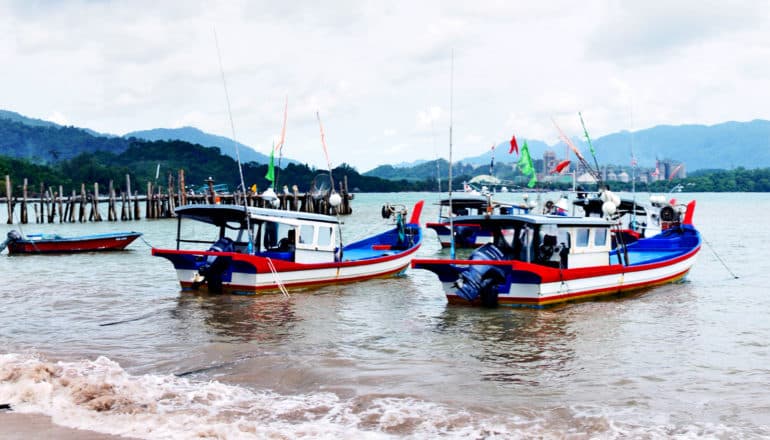
Researchers are proposing a market-based approach for boosting coastal and island nations’ involvement in conservation efforts.
In the first days of 2020, the Pacific Ocean archipelago nation of Palau took the momentous step of protecting 80%—500,000 square kilometers (193,051 square miles)—of its exclusive economic zone (EEZ) from fishing.
The move is at once a cultural tradition, a far-sighted strategy for future generations, and an example of the level of conservation needed to protect ocean biodiversity and habitat, researchers say.
Why don’t more coastal and island nations dive into this large-scale regenerative practice? Economics is among the major obstacles, according to Juan Carlos Villaseñor-Derbez, a doctoral student at the Bren School of Environmental Science & Management at the University of California, Santa Barbara.
“Various scientists and organizations recognize the need to protect 10 to 30% of the ocean,” says Villaseñor-Derbez. “But it’s very difficult for a country to conserve a region where extractive activities are so profitable, even if conservation may bring benefits in the future.”
In addition, while marine protected areas have in fact greatly improved biodiversity and increased fish stocks, the distribution of the “spillover” benefits is unequal, he says, often benefiting neighboring countries that may not be enacting their own conservation, as well as those fishing in the high seas.
Designing a fishing system for conservation
To find a way around this conundrum, Villaseñor-Derbez and fellow Environmental Market Solutions Lab members Christopher Costello, also of UC Santa Barbara, and John Lynham of the University of Hawaii, have simulated and tested a system that allows a conserving country the ability to offset the cost of conservation and recapture the benefits of protected areas within their maritime territory.
“Well-designed fishing markets can incentivize countries to engage in large-scale marine conservation,” Lynham says.
The researchers took their cue from the Parties to the Nauru Agreement (PNA), a coalition of nine Pacific Island nations who collaboratively manage 25% of the world’s tuna within their waters. Palau is one of the member countries, as is Kiribati, which in 2015 created the Phoenix Islands Protected Area (PIPA), one of the world’s largest marine protected areas.
Of particular interest to the researchers was the PNA’s vessel-day scheme (VDS), a system that grants fishing vessels—typically from countries fishing far from their own territories—rights to fish within their tuna-rich waters. Vessel days (capped at around 45,000 per year at the time of the study) are allocated between the PNA countries, which then grant purchasing vessels 24-hour rights to fish in their waters. The VDS not only allows PNA countries to maintain limits on the amount of fishing in their waters, it also brings in revenue for each country by selling access to the highly desirable tuna.
Importantly, according to the study, it also acts as a form of currency within the PNA—vessel days can be traded between countries. In the event of a closure, the conserving country can recoup the cost of any lost revenue by selling its fishing rights to the other countries, which stand to benefit from increased fish stocks thanks to the conservation efforts.
“Countries that conserve can sell fishing rights to countries that want to increase fishing pressure,” says Costello, a professor of resource economics at the Bren School. “If designed right, this can offset 99% of the cost of conservation.” Effectively, the market-based solution turns an otherwise economically untenable conservation zone into a viable long-term strategy.
Watching the plan work
The researchers analyzed the effects of this large-scale marine conservation in action by tracking 313 tuna fishing boats for seven years—more than 30 million individual points of data.
“Vessel-tracking data from Global Fishing Watch was instrumental to our work, because we were able to empirically test the effect of a large spatial closure in an area managed under fishing effort markets,” Lynham says. Specifically, they studied the patterns of fishing in Kiribati’s EEZ and the changes that occurred since the 2015 implementation of PIPA, which protected valuable tuna spawning habitat but also displaced a number of vessels fishing in its waters.
According to the data, the number of vessels in Kiribati’s waters did indeed decline as a result of the new fishing restrictions. So did its revenue. However, the decrease in Kiribati’s revenue was less than the decline in fishing effort. At the PNA level, however, the fishing effort remained constant, suggesting a redistribution of fishing vessels within the PNA and an offset in costs enabled by the trading of fishing rights from Kiribati to other PNA countries.
“Vessels are displaced when a marine protected area is created, but the conserving nation can still profit by selling fishing rights to the very nations where vessels redistributed to,” Villaseñor-Derbez says.
According to the researchers, with appropriate modifications and incentives—such as biomass-based fishing rights allocations—an economic framework with cross-country transferable and tradable rights could enable long-term, widespread conservation efforts needed to protect biodiversity, habitat, and food security.
“Our work provides a template for how to incentivize countries to engage in large-scale marine conservation within a market-based setting,” Costello says.
The findings appear in Nature Sustainability.
Source: UC Santa Barbara
The post Market-based strategy could boost ocean conservation appeared first on Futurity.
from Futurity https://ift.tt/2QSELRf
No comments:
Post a Comment